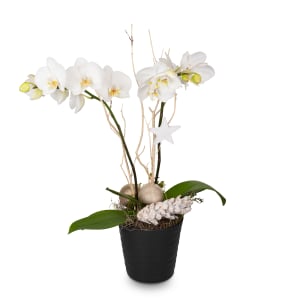Christmas Roses
The Christmas roses available from Advent are touchingly lovely. They beautify the outside area despite frost and snow and bloom the whole winter.

The many names of the Christmas rose and what they mean
The Christmas rose has many names: snow rose, black sneezewort, Christmas flower, Christ's flower, Christmas or winter rose.
Such names show how strongly this flower is rooted in our traditions and give us some insight into the «story behind them».
For example, names containing snow and winter naturally relate to their winter flowering season,
while names that have to do with Christ or Christmas refer to the tradition of cultivating the plants so that their flowers open at Christmas time.
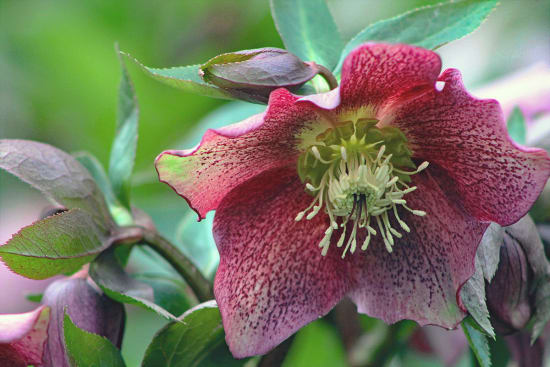
But it is also called black sneezewort. This name points to its former use as sneezing powder and the plant's black rhizome. Talking about sneezing powder:
the protoanemonin contained in Christmas roses is to blame for the sneezing. It irritates the mucous membranes. In earlier times, this phenomenon was used to «sneeze out» evil spirits and diseases. However, this treatment wasn't without its dangers as Christmas roses are toxic. This also explains the genus name «Helleborus».
Although its etymology isn't totally definitive, it is thought that it could be made of of «helein», which means «to kill» and «bora» for «food».
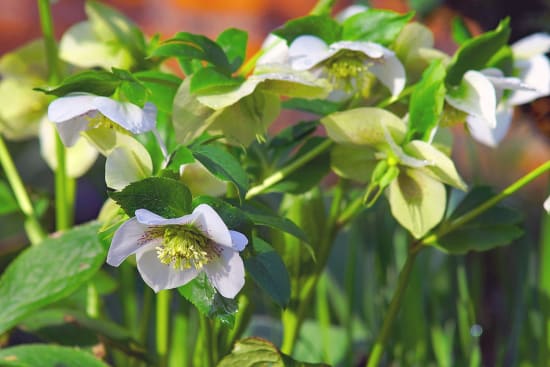
Christmas rose: comes with protection against the cold
The Christmas rose is a species of the genus Helleborus and belongs to the buttercup or crowfoot family (Ranunculaceae).
On our continent, it grows in southern Central Europe and in the southern and eastern Limestone Alps. It occurs at heights of up to 1900 metres and can only be found at a few sites in Switzerland.
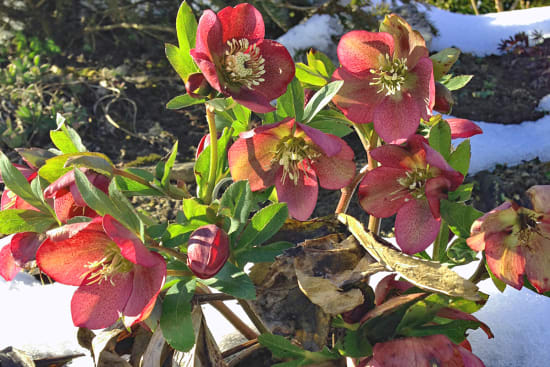
The Christmas rose originates in Southeast Asia. It can be assumed that various species of Helleborus came to Europe after the last Ice Age. The ancestors of today's Christmas rose probably spread along the ancient Tethys Ocean from Southeast Asia westwards in the course of geological development.
They therefore developed the ability to defer or even stop their growth and flowering periods because of the constant alternation between warm and cold sectors.
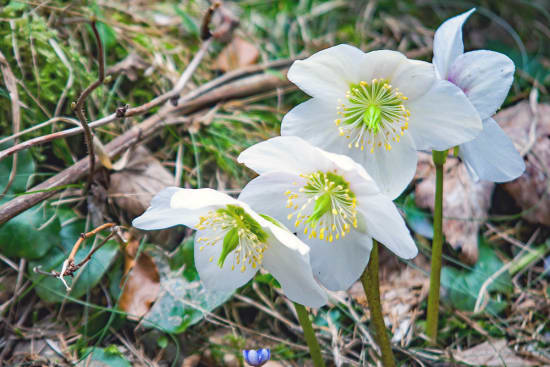
However, something else also remains from that era. The plants have a special mechanism to protect themselves from damage caused by the cold:
they can store water from their cells in the in-between spaces to prevent freezing water causing the cells to split.
The flower heads and leaves therefore droop as if wilted in frosty weather, but recover as soon as the temperature rises again.

What Christmas roses and toads have in common
What do Christmas roses and toads have in common? Poison. Christmas roses contain substances that irritate the skin, and some types of toad also produce toxic secretions.
The people of the Middle Ages therefore believed that toads took their contact poison from the Christmas rose. Could that have been the reason why French botanist Antoine Laurent de Jussieu created the botanical family of Ranunculaceae in the 18th century.
It includes the Christmas rose. And the name Ranunculaceae contains the word «rana» meaning «frog» or «ranunculus»
meaning «little frog».
Who knows. One thing is for certain: modern analytical methods have led to an amazing conclusion: the irritants in the Christmas rose have a comparable chemical structure to those in toads.
So, it seems that the curious popular belief may have contained a grain of truth across many centuries.
Nevertheless, although the Christmas rose is poisonous like many species of Ranunculaceae and its sap can lead to
irritations of the skin, cases of poisoning – including children or pets – are extremely rare to unknown.
For care tips for Christmas roses (plants) click HERE.
For care tips for Christmas roses (cut flowers) click HERE.
More exciting topics on flowers & plants
Dahlias
Varied, colorful and simply wonderful: dahlias are an ode to summer and autumn and a symbol of happiness, health and love.
Chrysanthemums
A favourite flower of the Japanese emperor, chrysanthemum has conquered the whole world. Today, the flower with poetic names has countless fans.
Poinsettias
Did you know that poinsettias speak Spanish, that there is a Poinsettia Day and that you have the choice between an unbelievable number of colors and shapes? Find out more.
Christmas-roses
The Christmas roses available from Advent are touchingly lovely. They beautify the outside area despite frost and snow and bloom the whole winter.
Amaryllis
Amaryllis? The Advent flower, popular for its spectacular variety of colours, actually has a different name. But you know why it's a compliment when you get one?
Succulente & cacti
Because they are able to store water, they are particularly easy to care for. But they can also be extravagant, fragrant, flowering and inspire with exotic shapes.
Foliage plants
They're hip. There are many scientific reasons for that. But actually, they're just cool, and healthy, and anything but boring. Here's a little hit parade.






